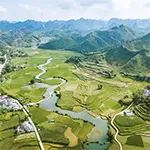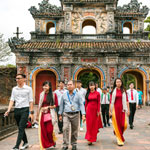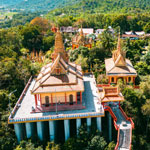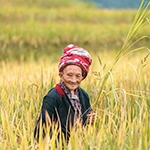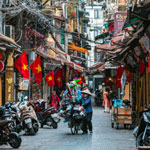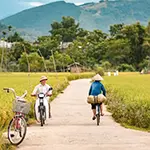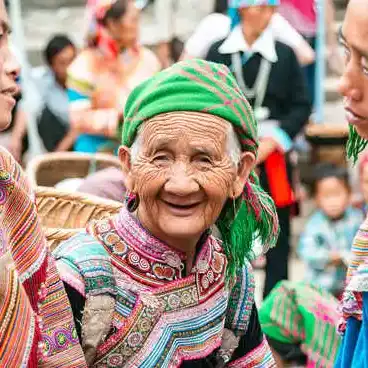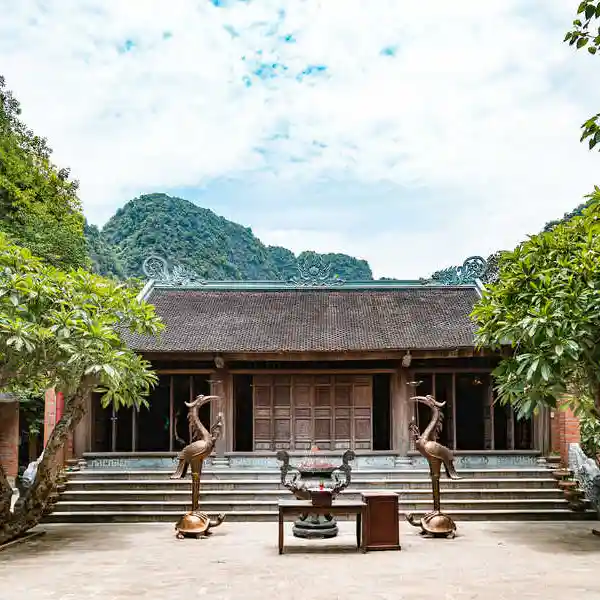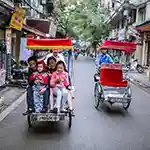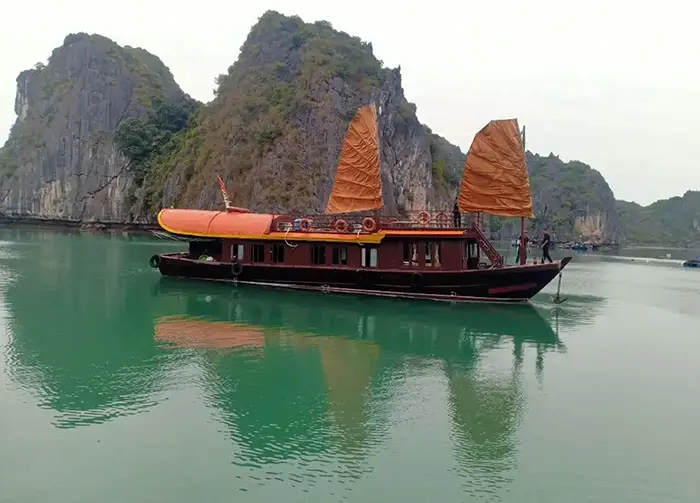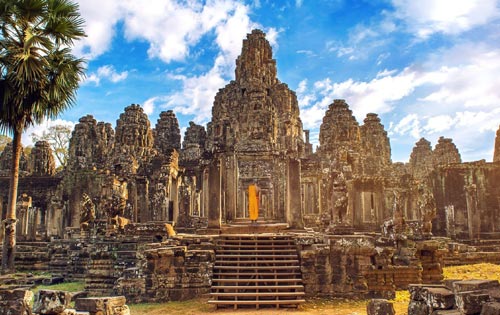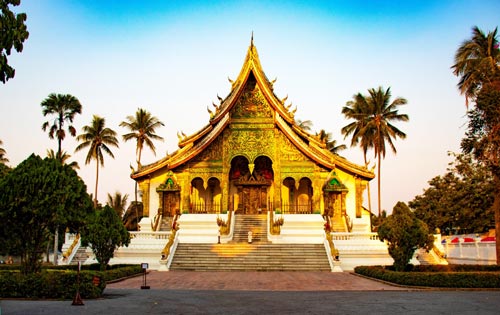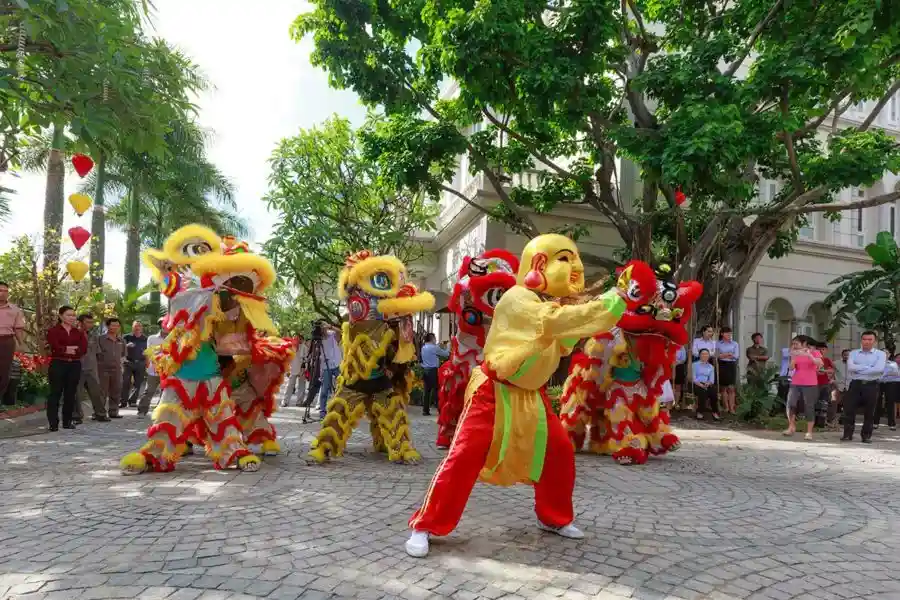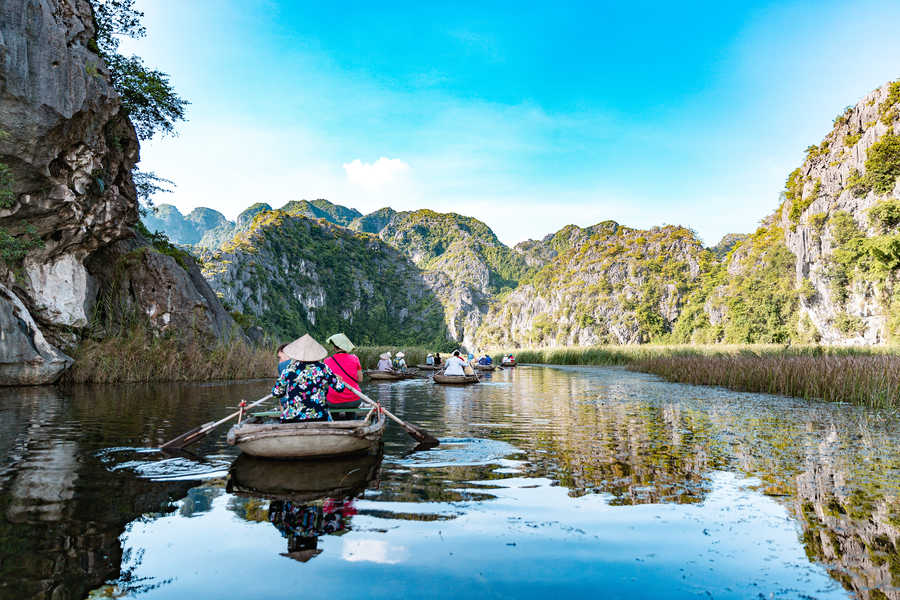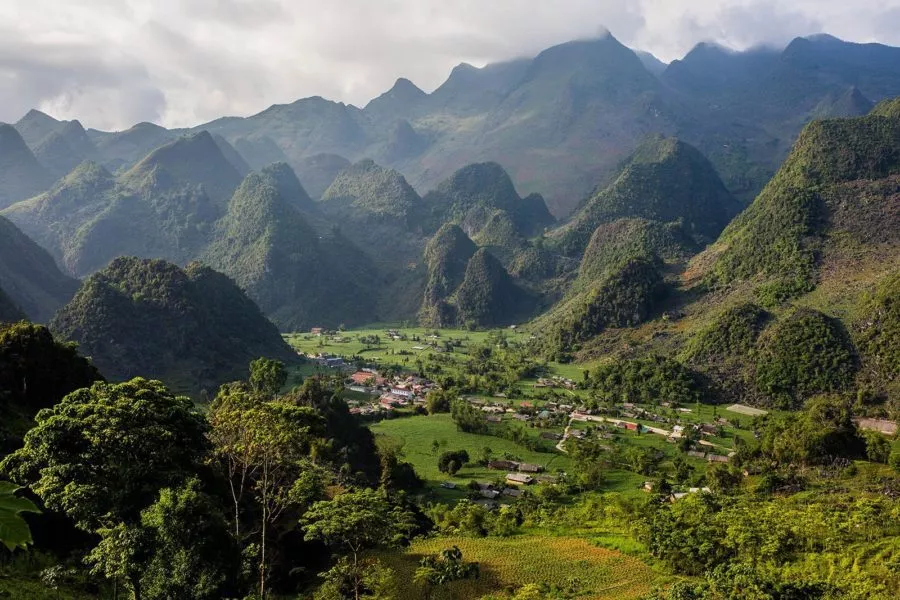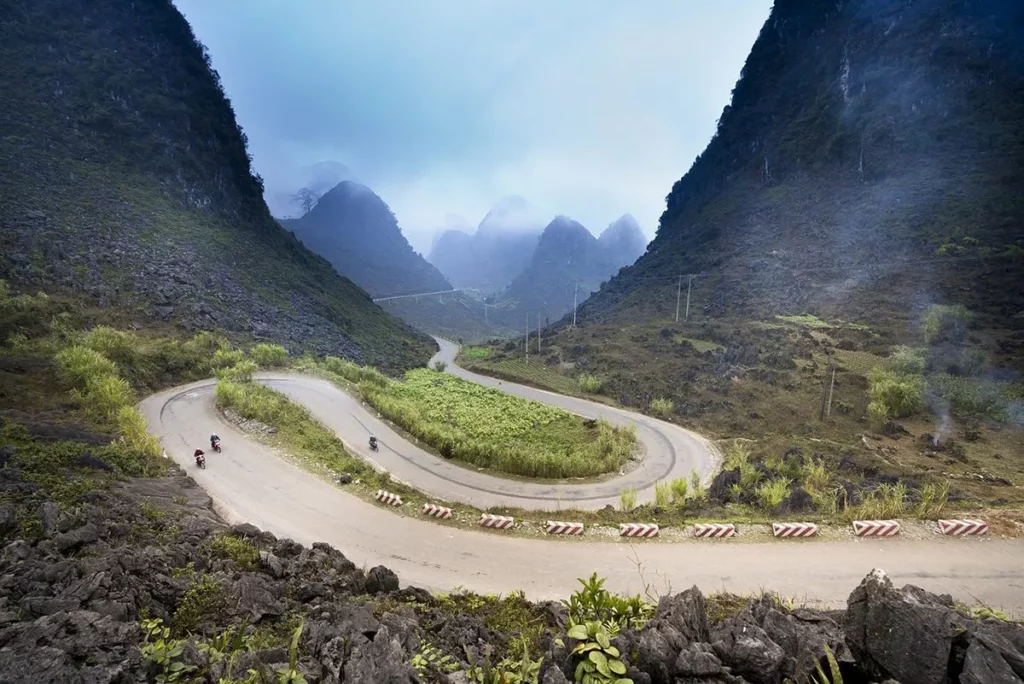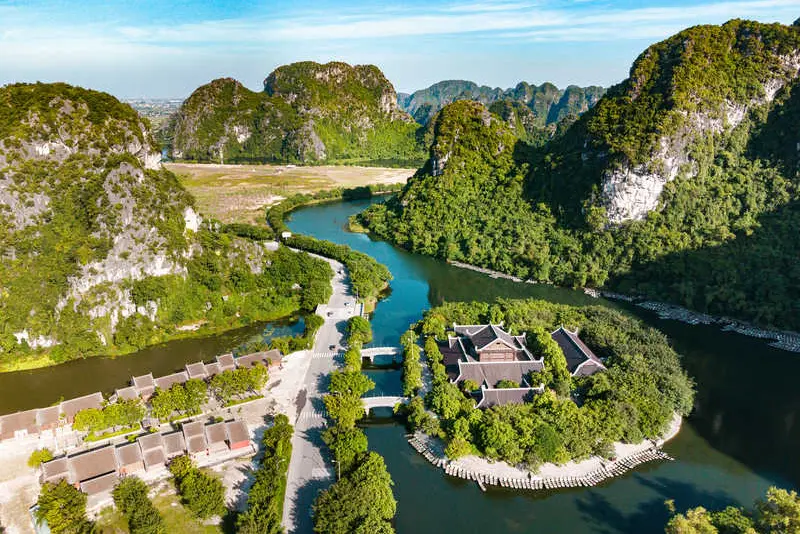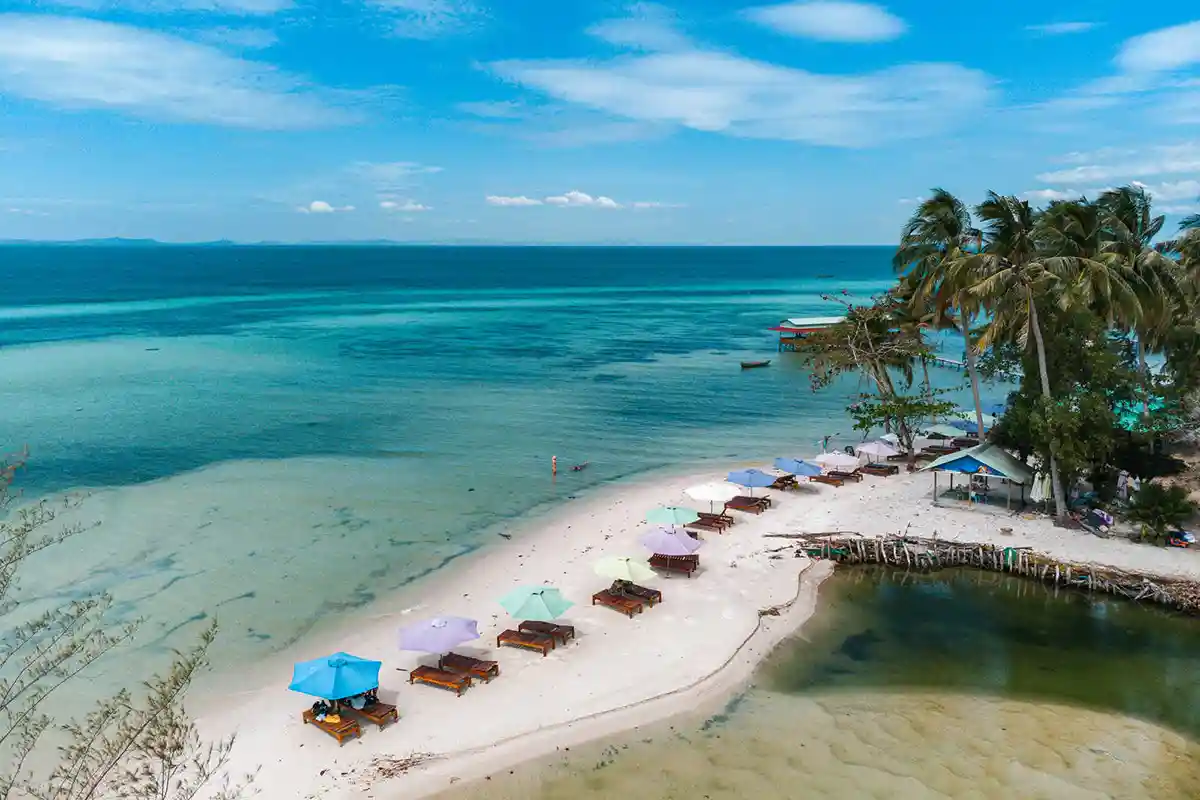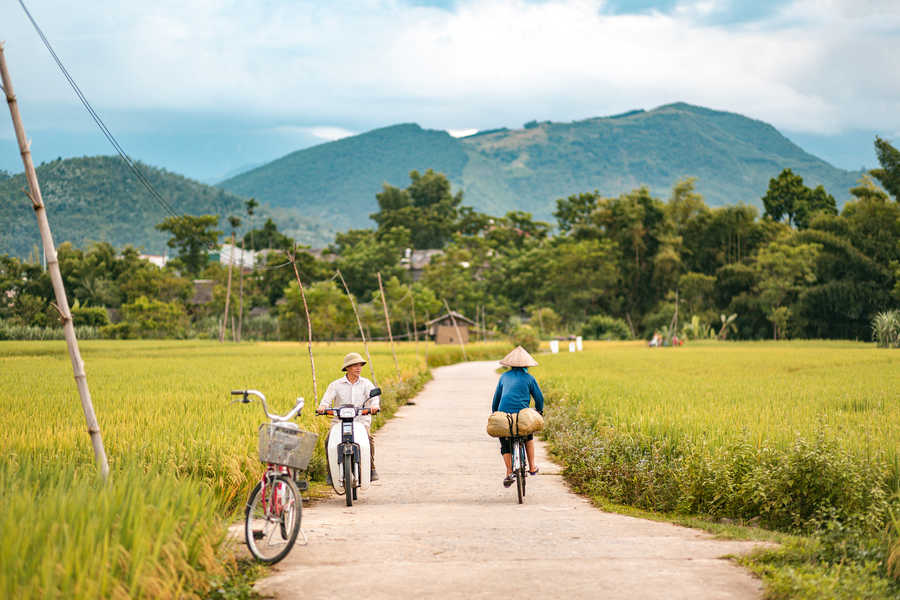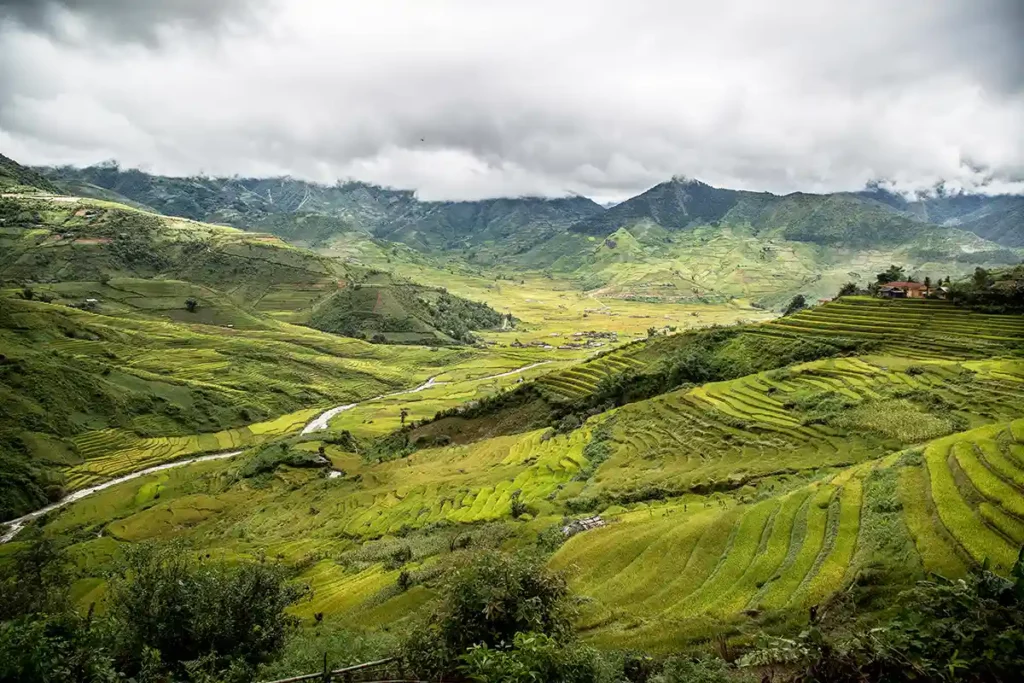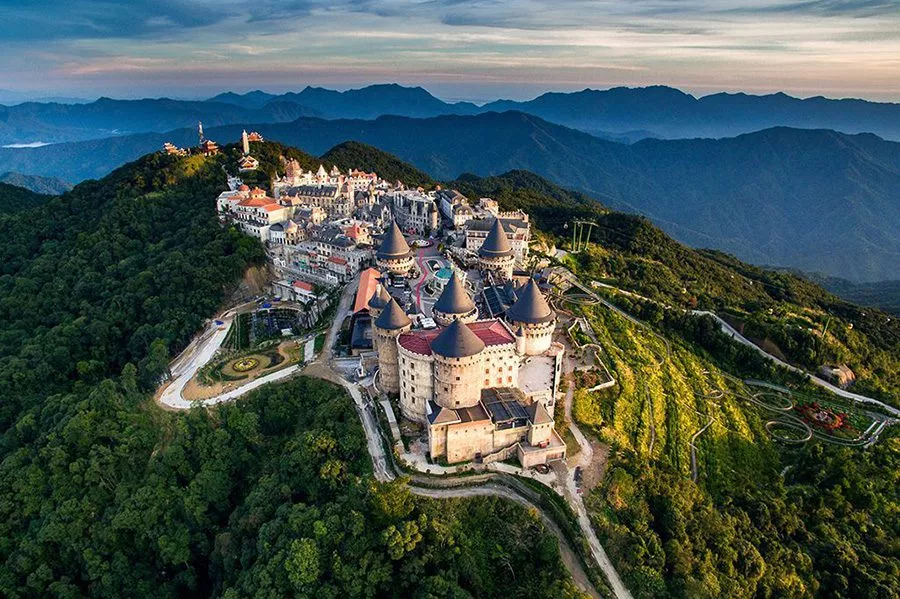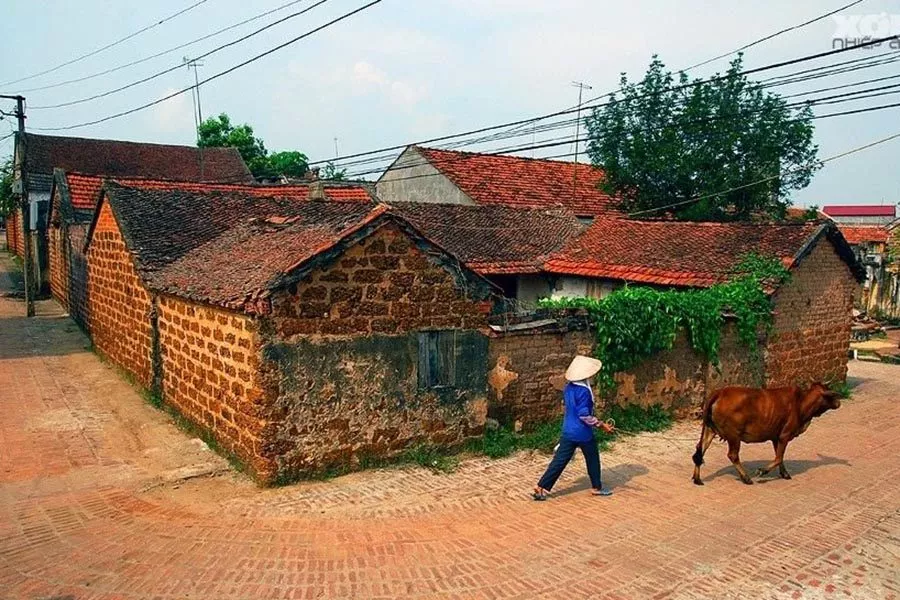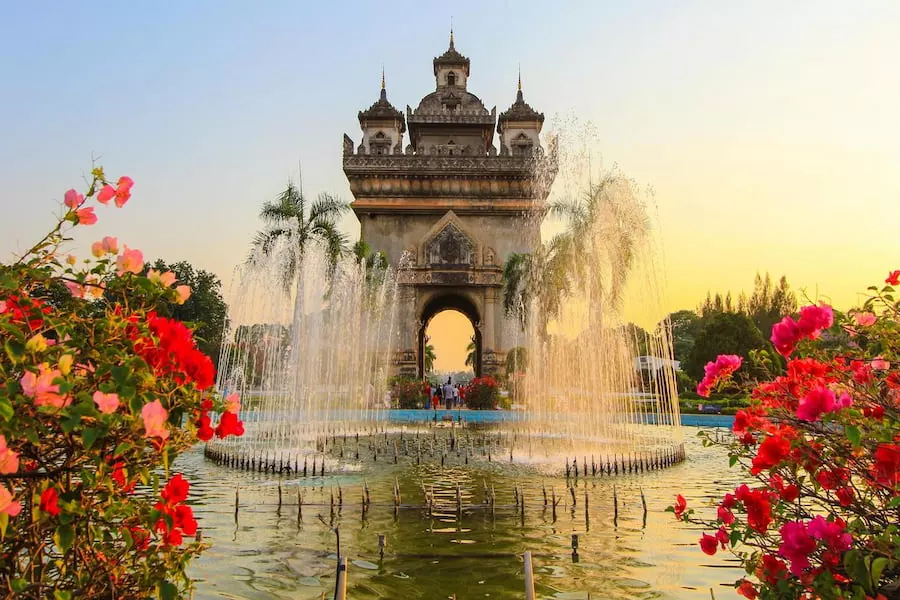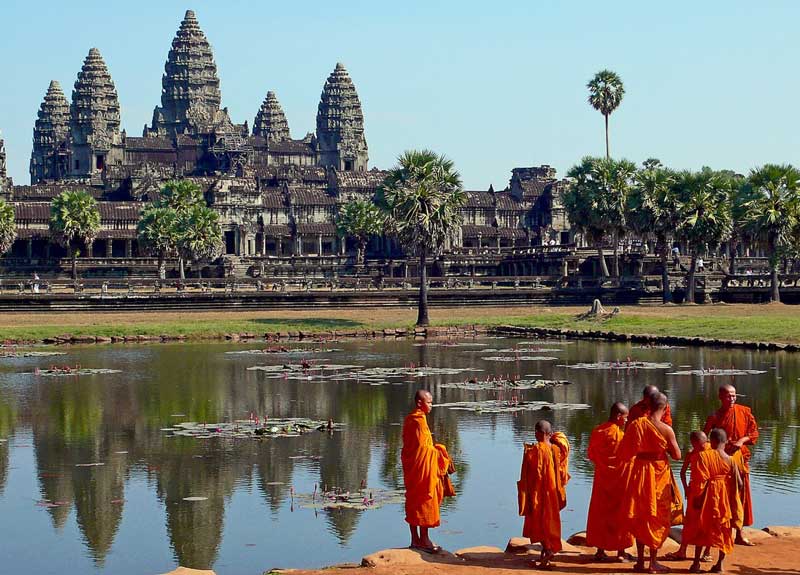Vietnam, a land of contrasts and historical heritage, fascinates with its incredible cultural richness. From ancient customs to vibrant festivals filled with color and joy, the country offers a unique experience where tradition permeates every aspect of daily life. This article invites you to immerse yourself in the soul of Vietnam — a journey through its festive traditions, where every custom tells a story. Embark on an unforgettable adventure to discover what Vietnam holds most precious.
Feel free to contact us to organize your trip!
Vietnamese festivals: A kaleidoscope of traditions
Tết – Vietnamese Lunar New Year: renewal and celebration
Tết Nguyên Đán, or the Lunar New Year, is the pinnacle of Vietnamese festivals, marking the start of a new year filled with hope and happiness. It is a time when families reunite, and the streets glow with red and gold — colors symbolizing luck and prosperity. Preparations begin well in advance, with the making of Bánh Chưng or Bánh Tét, traditional sticky rice cakes filled with mung beans and pork, wrapped in banana leaves. Homes are cleaned and decorated, debts are paid, and quarrels are forgotten — symbolizing a fresh start for the coming year.
The celebration includes important rituals such as the first temple visit to pray for luck, and xông đất, welcoming the first visitor after midnight — a person carefully chosen to bring good fortune for the year ahead.
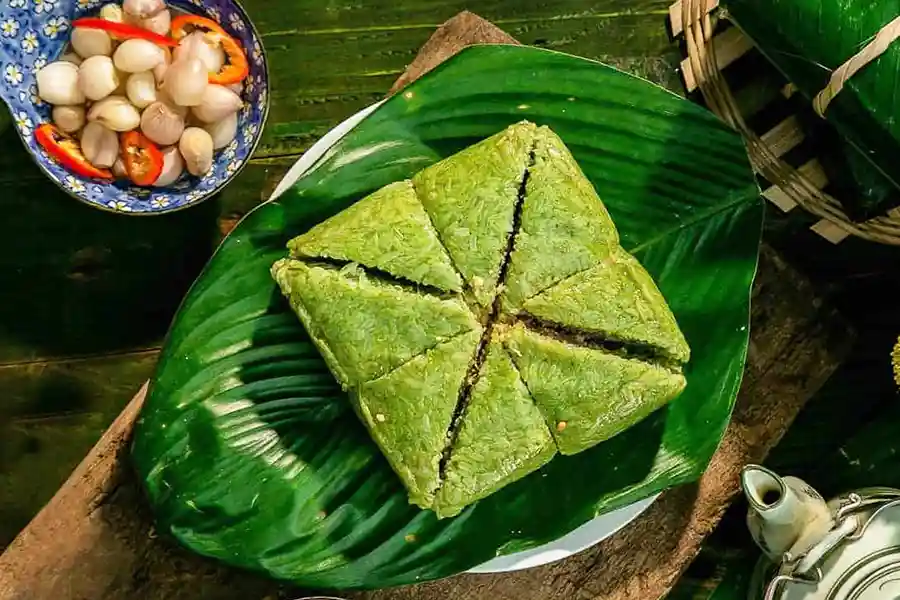
Bánh Chưng at the heart of the festive table. Photo credit: Mathieu Arnaudet
The Mid-Autumn Festival: A Tribute to the moon and childhood
The Mid-Autumn Festival, or Tết Trung Thu, is one of Vietnam’s most magical celebrations, held during the autumn full moon. Traditionally linked to the harvest, it has become a joyful family celebration, especially for children. Les rues se remplissent de lumières avec des enfants portant des lanternes en papier de toutes formes, des étoiles aux poissons, créant une atmosphère magique. Streets fill with colorful lanterns of all shapes — stars, fish, butterflies — creating a dreamlike atmosphere.
Mooncakes (Bánh Trung Thu) play a central role, with fillings ranging from lotus seed paste to red bean and salted egg yolks representing the moon.
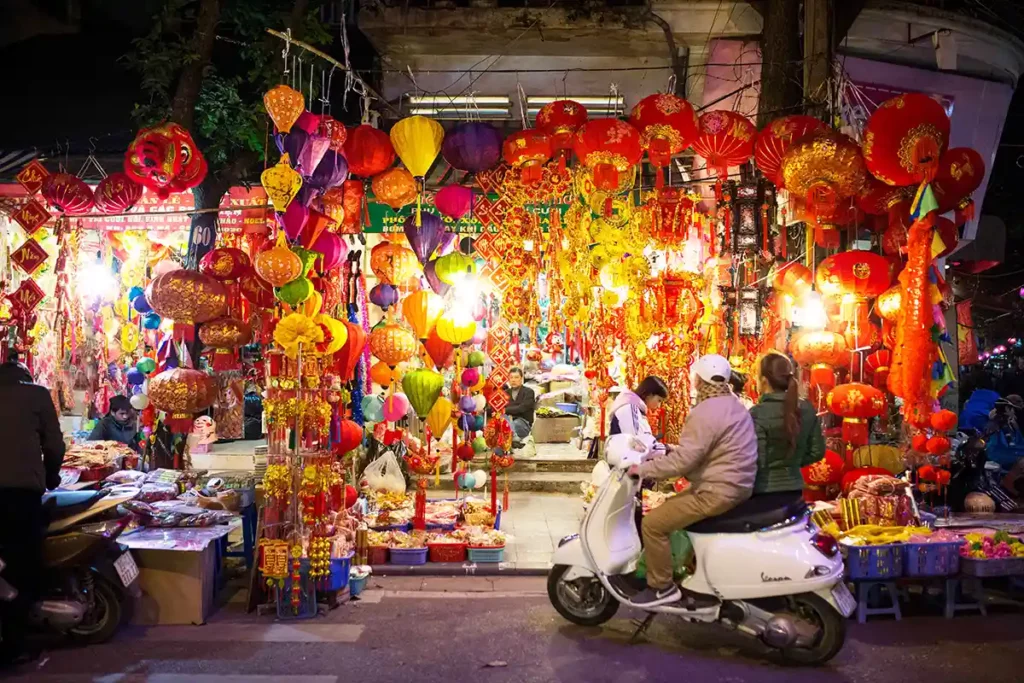
Hang Ma Street during the Mid-Autumn Festival, Hanoi. Photo credit: Mathieu Arnaudet
Vietnamese customs: between modernity and heritage
Ancestor worship: a timeless tradition
At the heart of Vietnamese customs lies ancestor worship, a practice that transcends religion, reflecting filial piety and deep respect for family. Every home has an ancestral altar, decorated with photos, incense, and flowers. Offerings of food, fruits, and sometimes symbolic paper money are made during important occasions such as Tết or death anniversaries, inviting the spirits of ancestors to join the celebrations.
This tradition reflects the Vietnamese belief that ancestors continue to watch over their descendants, influencing their fortune and well-being. It strengthens family unity and the sense of belonging to a lineage.
Vietnamese weddings: ceremony and symbolism
A Vietnamese wedding is a grand celebration where tradition meets modernity. The ceremony begins with the “Lễ Ăn Hỏi”, or engagement ritual, during which the groom’s family presents gifts to the bride’s family. These gifts — often carried in red lacquered boxes — include symbolic foods such as bánh phu thê (wedding cakes), fruits, and wine, representing prosperity and harmony.
On the wedding day, the bride traditionally wears the elegant “Ao Dai”, the national dress, and the couple pays tribute to their ancestors before the festivities begin.
Vietnamese handicrafts: expressions of tradition and skill
Silk and lacquer: The beauty of craftsmanship
Vietnamese handicrafts are living testaments to the country’s artistry and tradition. Vietnamese silk, famous for its exceptional quality, is woven in villages such as Van Phuc, where the craft has been practiced for over a thousand years. Buying a silk garment is not only an aesthetic pleasure but also a way to support a centuries-old heritage.
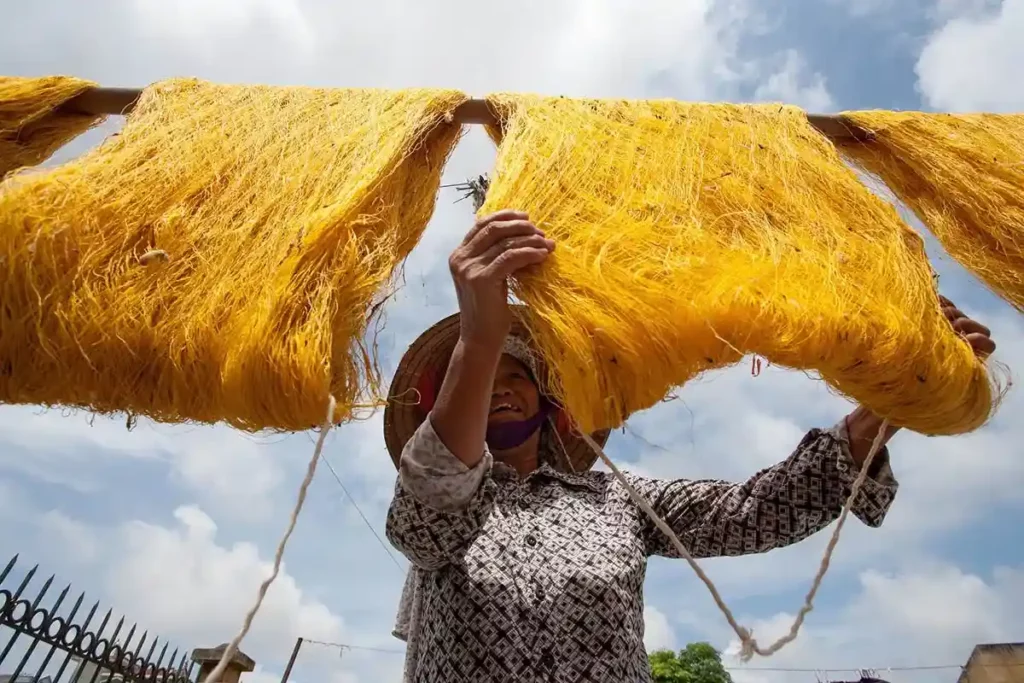
Silk drying in Nha Xa Village.
Vietnamese lacquerware, on the other hand, is a centuries-old art form blending beauty and durability. Each piece is the result of a meticulous process lasting several months, resulting in works of striking depth and brilliance. These objects embody patience, precision, and harmony between humans and nature.
Ethnic markets: the beating heart of Vietnamese culture
Ethnic markets are vibrant festivals of color and life. They serve as meeting places for numerous ethnic groups, bearing witness to the country’s living traditions and cultural identity. At markets such as Bac Ha or Sapa, visitors can experience a mosaic of customs through traditional clothing, musical instruments, and local produce. These markets are not only commercial hubs but also spaces that preserve and celebrate Vietnam’s cultural diversity.
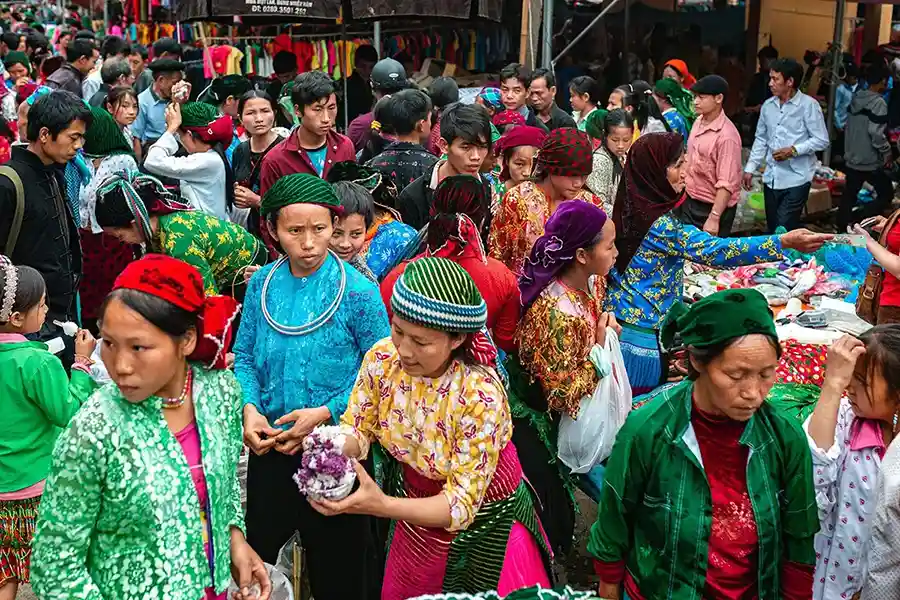
Market day in Du Gia, Ha Giang. Photo credit: Mathieu Arnaudet
Vietnamese spirituality: between customs and beliefs
The worship of the Mother Goddesses: an ancient faith
The Cult of the Mother Goddesses (Đạo Mẫu) is a deeply rooted spiritual practice that honors natural forces and femininity. Rituals and ceremonies pay homage to divine maternal figures, celebrating life, fertility, and protection. Recognized by UNESCO as an Intangible Cultural Heritage of Humanity, this cult exemplifies how Vietnam’s ancient spirituality continues to thrive and adapt to the modern world.
Buddhism and pagodas: sanctuaries of peace and reflection
Buddhism, practiced by a large part of Vietnam’s population, influences many of the nation’s customs and traditions. Pagodas across the country serve as serene places of worship and contemplation. Visitors can admire their architectural beauty and participate in rituals of prayer and meditation. Notable examples include the One Pillar Pagoda in Hanoi and the Thien Mu Pagoda in Hue, both embodying Vietnam’s spiritual harmony.
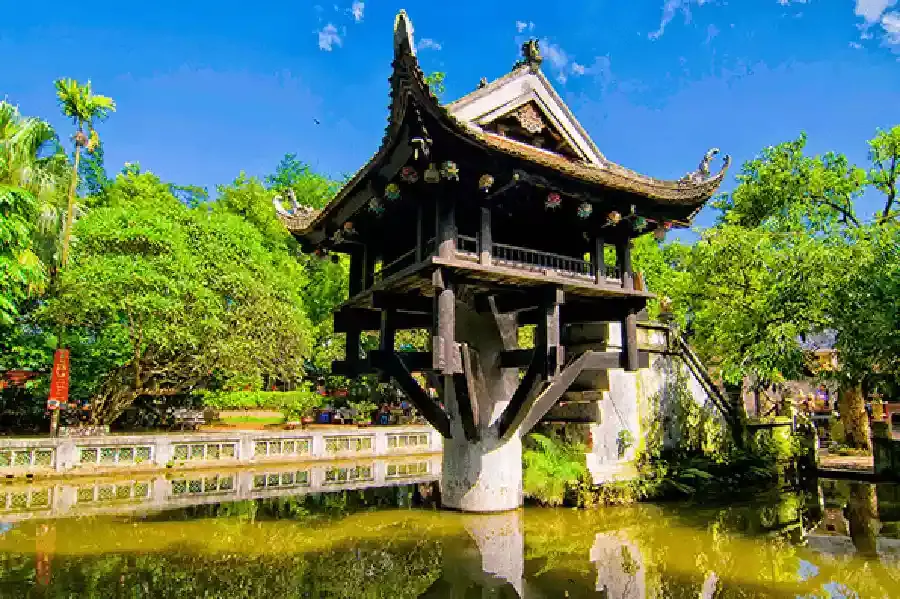
Vietnamese gastronomy: a reflection of custom and tradition
Typical dishes: a journey through flavors
Cuisine is at the core of Vietnamese culture, with each dish celebrating tradition and regional identity. “Pho,” the fragrant noodle soup, is the symbol of Vietnamese cuisine, known worldwide. Each region has its own version, telling a part of its history. “Banh Mi,” a fusion of French and Vietnamese influences, is another example of the country’s rich culinary heritage.
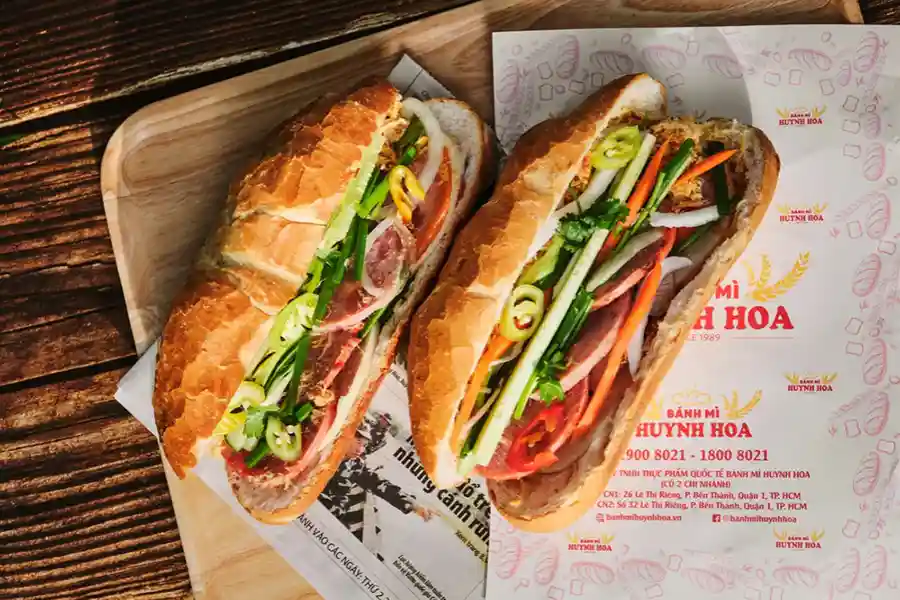
Bánh Mì – the iconic Vietnamese sandwich.
Food festivals: A feast of flavors and traditions
Food festivals offer locals and travelers the chance to savor Vietnam’s culinary treasures while discovering regional traditions. They feature cooking competitions, tastings, and workshops that celebrate the country’s rich flavors and warm hospitality.
Notable examples include:
Hoi An Food Festival – Held in the ancient town of Hoi An, this festival celebrates traditional dishes such as Cao Lau and Bánh Bao Bánh Vac (white rose dumplings).
Southern Fruit Festival: Organized in Ho Chi Minh City, this festival highlights the diversity and richness of tropical fruits from southern Vietnam. Visitors can taste fresh fruits, attend fruit carving competitions, and discover local dishes made with exotic fruits.
Buon Ma Thuot Coffee Festival: In Dak Lak province, this festival celebrates coffee culture, which plays a major role in Vietnam. It includes coffee tastings, exhibitions on cultivation and production methods, as well as cultural performances.
Each of these festivals is an invitation to discover Vietnam’s gastronomic richness while enjoying the hospitality and vibrant spirit of its people.
FAQ
Which festivals should you not miss in Vietnam?
Tết (Lunar New Year), the Mid-Autumn Festival, and the Hue Festival are must-sees.
How do Vietnamese customs appear in daily life?
Through ancestor worship, traditional weddings, and daily culinary habits.
Can tourists participate in local festivals?
Yes! Visitors are often welcome to observe — and sometimes join in — the festivities.
Where can you see traditional Vietnamese handicrafts?
In artisan villages and ethnic markets throughout the country.
Why is cuisine so important in Vietnamese culture?
Because it reflects the country’s history, traditions, and regional diversity.
The customs and festivals of Vietnam are the mirror of a rich and diverse nation. Each revealed tradition is a page of Vietnamese history, inviting travelers on a deep exploration of this fascinating country. Beyond a simple journey, discovering Vietnam through its rituals and festivities is a transformative experience — a true dialogue with the soul of a people whose warm hospitality and festive spirit leave an everlasting impression.

